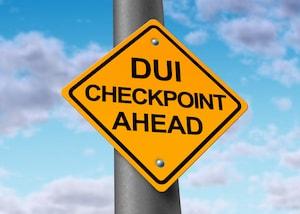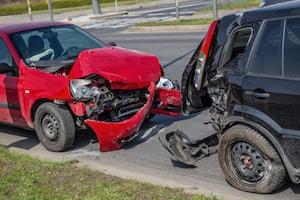121 S. Wilke Road, Suite 301, Arlington Heights, IL 60005
Home and Hospital Visits for Your Convenience
Serving Clients Across 7 Illinois Locations
Recent Blog Posts
Can Impaired Driving Prevention Measures Reduce Car Accidents?

When it comes to the dangers of drunk driving, it is no wonder policymakers, public agencies, and communities nationwide have made it an ongoing priority to ramp up their prevention outreach efforts. According to the Centers for Disease Control and Prevention (CDC), 29 people die every day in the United States due to intoxicated driving. This means one person dies every 50 minutes, and this does not account for all the non-fatal car accident injuries that occur because of DUI incidents. While impaired driving is generally defined as driving under the influence of alcohol, the term can also refer to operating a vehicle under the influence of narcotics, another chronic offense that plagues the roadways.
Strategies Used to Combat Drunk Driving
A number of strategies have been developed to discourage and prevent drunk driving behavior, including stricter laws and more stringent enforcement actions, as well as an increase in public education awareness campaigns. Technology has been another useful tool for discouraging drinking and driving. The use of ignition interlock devices (IIDs), for example, forces offenders to submit to a breathalyzer test in order to start their vehicle. The breathalyzer device is installed in the motorist’s car and prohibits the vehicle from starting if certain blood alcohol content (BAC) levels are detected on the driver’s breath. A range of other prevention tactics are practiced nationwide, such as sobriety checkpoints, vehicle impoundment, and license suspension, as well as registration and license plate confiscation.
What Factors Can Place Pedestrians at Higher Risk for Injury?

While we commonly hear of driver and passenger death and injury statistics in the news when the subject of car accidents arises, the reality is that pedestrians are just as affected by automobile crashes, making up a large portion of the collision statistics reported each year. In fact, the Centers for Disease Control and Prevention (CDC) tells us that pedestrians are 1.5 times more likely to be killed in a car crash than passenger vehicle occupants. Pedestrian accidents in the year 2016 alone claimed nearly 6,000 lives in the United States, and in 2015, around 130,000 pedestrians needed emergency treatment. The nature and number of incidents evolve each year as the CDC releases the latest reports, but all of these statistics point to one common denominator: certain factors put pedestrians at higher risk for injury.
Both Passengers and Pedestrians Are at Risk in School Bus Accidents

Fall is the time of year when children are headed back to school. Since many kids are bus riders, parents place the safety of their children in the hands of public transportation. While school bus transport is still a relatively safe and efficient way to get children to and from classes, research shows that school bus accidents here in Illinois and across the country continue to be a risk, and passengers are not the only ones in danger of injury. Recent incidents highlight the fact that school bus drivers, as well as pedestrians present in the areas surrounding school bus stops, are also likely to experience potential injuries in the event of an accident.
Recent Events and Data Point to Diverse Risks
Students, parents, and the community at large in the city of Arcola, Illinois, are still reeling from a shocking school bus crash that took place earlier this summer. The bus was hit by a car head-on off Illinois Route 133, putting over 40 frightened first-graders in harm’s way. Thankfully, some of the children only sustained minor cuts and scrapes, and there were no major injuries. The driver was instinctive and quick to act, but the damage done to the front end of the bus shows the accident could have been much worse, particularly for the driver. All too often, we assume that those at greatest risk are the children passengers themselves, but this is one recent example that reminds us that bus drivers themselves are in danger of direct injury in school bus accidents.
What Kind of Nursing Home Injuries Are Considered Abuse or Neglect?

Many news outlets have reported on the alarming rise of nursing home abuse and neglect over the past few years. Many families put their trust in long-term care facilities if their loved ones can no longer live on their own. According to the Quad-City Times, the Illinois Department of Public Health recently fined a local facility thousands of dollars for neglecting the treatment of a resident’s wound, which was not only discovered to be improperly cleaned and bandaged, but also lacking the basic record keeping required to provide the necessary care for the injury. This same nursing facility was fined even more--an astonishing $75,000--by the IDPH just a few years earlier for more cases of negligence.
What the Law Considers Neglect
The above incident and thousands like it across the country are examples of how personal injury cases within nursing homes consist of more than just slip and falls. While repeated falls are in fact a common neglect-related occurrence in long-term care facilities, many other types of injuries constitute cases for abuse and neglect. The Nursing Home Care Act under Illinois State law defines neglect as a facility’s failure to provide any kind of adequate medical care, mental health treatment, or personal care. The law states that this includes the failure to provide psychiatric rehabilitation or any general assistance with daily living activities that are required to protect the resident from physical or mental harm.
What Can I Do to Protect Myself From Medical Misdiagnosis?

The danger of misdiagnosis in the healthcare industry is alarming, and it is far from a new issue. Over the last few years alone, these errors, which frequently lead to medical malpractice cases, have garnered a lot of attention in the media, putting patients on red alert when it comes to the matter of their precious health. In 2015, the National Academy of Medicine announced that most people will receive an incorrect diagnosis at least once in their lives. In 2017, research showed that an estimated 100,000 Americans died or were permanently disabled due to an incorrect or delayed diagnosis.
Advocating For Your Health
While reports such as these continue to surface each year, they may lead one to ponder the degree of control a person has over their own health, especially when it feels as if you are at the mercy of the physicians you turn to for answers. Thankfully, you are not powerless when it comes to protecting yourself from misdiagnosis. Here are a few practical, effective ways you can advocate for our health:
Can Rear-End Collision Injuries Cause Chronic Health Problems?

In many cases, when someone has been involved in an auto accident and emerged from the collision seemingly unscathed, they usually thank their lucky stars that the crash was not more serious. After minor fender benders, it is not uncommon for victims to say, “It could have been much worse.” While this may be true in some circumstances, the reality is what we consider even the most minor car accident can, and often does, cause significant damage to our quality of life over time. These lesser injuries, while not life-threatening, still run the risk of causing chronic, ongoing health issues. This is especially true when it comes to rear-end collisions, due to the direction and point of impact. In some cases, the injuries result in a person not being able to work.
Types of Injuries Sustained in Rear-End Crashes
What If I Am Injured in a Head-On Collision in Illinois?

When you are involved in a car accident, it is entirely common to feel flustered or panicked. You may have suffered serious injuries, or your vehicle may have been significantly damaged due to the impact of the collision. After seeking out any necessary medical attention, it is important to react quickly. In order to provide yourself with a greater chance of securing compensation after a motor vehicle collision, it is critical to hire a skilled personal injury lawyer. Head-on collisions can be especially dangerous, and victims of these types of accidents should be sure to understand their legal options.
Common Injuries
A head-on collision occurs when two vehicles traveling in opposite directions crash into each other. Due to the sheer velocity of many of these accidents, the injuries suffered can be life-altering or even fatal. According to the Insurance Information Institute (III), there were over 3,500 fatal head-on collisions throughout the United States in 2016, and these crashes accounted for more than 10 percent of all fatal accidents that year. Common injuries suffered in head-on collisions include multiple bone fractures, spinal damage, and traumatic brain injuries. These injuries can occur even when a car's driver and passengers are protected by safety systems such as seat belts and airbags.
What Are the Most Common Workplace Injuries?

When an employee is significantly injured at work, people may assume that their employer will be more than willing to pay out the workers’ compensation payments to which they are entitled. However, this is not always the case, even in a state such as Illinois in which workers’ comp benefits are mandated. In reality, many companies will do whatever they can to avoid paying workers’ compensation benefits in full, or they may attempt to avoid making these payments altogether. However, since employees commonly experience workplace injuries, it is important to understand the steps you can take to ensure you will receive the compensation you and your family deserve if you are hurt on the job.
Frequent Workplace Injuries
While injuries in the workplace vary across different industries, there are a number of serious incidents that are common throughout all lines of work. Slip and fall injuries are some of the most common workplace incidents that can come with significant health ramifications. According to the Bureau of Labor Statistics, slips and falls resulted in the death of more than 800 workers throughout the United States in 2016 alone. Falls are increasingly common in the construction industry, where employers often fail to adhere to nationally recognized safety standards and OSHA regulations. In other fields, poorly lit rooms or poorly maintained stairways can be the culprit in a slip and fall.
How Can I Seek Compensation After a Bicycle Accident in Illinois?

Every year, thousands of Americans suffer significant injuries while riding bicycles. While biking can be an enjoyable activity and a convenient way to commute to and from work, cycling does come with some inherent safety risks. Most notably, bike riders have little protection aside from their helmets, especially if they are struck by a motor vehicle. Because of this, many of the injuries associated with bicycle accidents can be life-threatening. According to the National Highway Traffic Safety Administration (NHTSA), more than 700 bicyclists suffered fatal injuries after being struck by motor vehicles in 2017. If you or a loved one are injured in a bicycle collision, it is time to speak with a legal professional.
Securing Compensation
When accidents occur between a motorist and a bicyclist, it is not uncommon to find that the motorist was acting negligently in some manner. Motorist negligence can come in any number of forms, from running a red light to erratically swerving from lane to lane. Today, the most common forms of driver negligence are speeding, texting and driving, and driving under the influence of drugs or alcohol. Speeding is prevalent in many bicycle collisions, due to the fact that the motorist’s reaction time is significantly hindered because of the high speed at which he or she is traveling. Texting while operating a vehicle has become the most common form of distracted driving and can be incredibly dangerous to bicyclists. Unfortunately, alcohol plays a huge role in many collisions between bikes and vehicles. Throughout 2017, 37 percent of all fatal bicycle collisions involved an intoxicated motorist. An injured cyclist may be able to seek compensation from a driver whose actions or negligence led to a bike accident.
What Are the Most Common Forms of Medical Malpractice?

In the United States, various forms of medical malpractice are much more common than most people would like to assume. Medical malpractice is defined as a process in which a medical professional does not adhere to a set of standards and thus causes injuries or significant harm to a patient. Malpractice in the medical field can include surgical errors, misdiagnosis, and pharmaceutical errors. Regardless of the type of medical malpractice, when a medical professional acts in a negligent or reckless manner, the implications can be life-threatening. If you or a member of your family has been impacted by the negligence of a medical professional, it is time to speak with a skilled legal professional.
Medical Mistakes
In any profession, people can make mistakes; we are all human. Unfortunately, in the medical industry, a person’s negligence or reckless behavior can ultimately cost a person his or her life. Below are some of the most common forms of medical malpractice in the United States.

 Spanish
Spanish


















